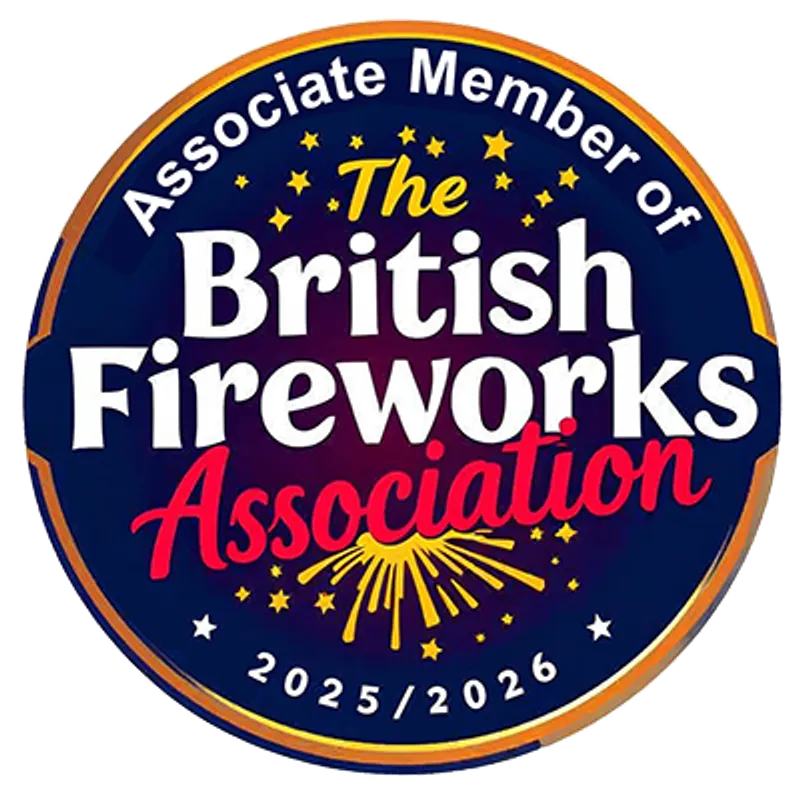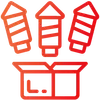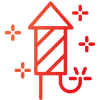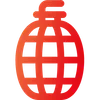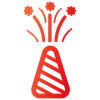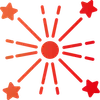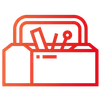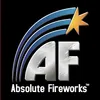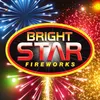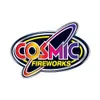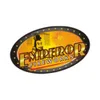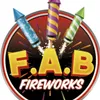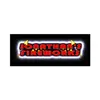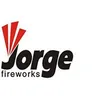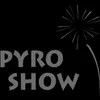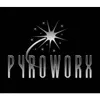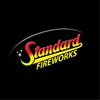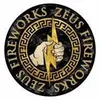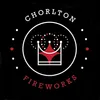Photographing Fireworks: A Quickfire Guide
Fireworks are one of the most frequently photographed things in the world. The brilliant colours and glittering light that burst and rain down when fireworks explode in the night sky has everyone reaching for their phones or cameras.
But no matter how hard you try to get the settings right, position your shot, and take hundreds of photos in the hopes of getting one perfect one, most firework photos come out looking much less dramatic than the subject matter.
At Chorlton Fireworks, we know a thing or two about how to photograph fireworks, after all, we need to be able to capture how our products look in action. Here are some of our sure-fire tips on getting the best firework photos at any fireworks show.

What equipment to use
It’s almost always going to be a chilly night when taking photos of fireworks, with most annual fireworks displays falling in winter months, like Fireworks Night, Diwali, and New Year’s Eve. You’ll have much more fun if you come prepared with warm clothes, gloves (as you’ll be using your hands frequently), a flask or some snacks, and maybe a folding chair. In addition to these essentials, there are some pieces of photography equipment that could make your session much more rewarding.
Tripod
A tripod is an essential piece of equipment if you want to photograph fireworks well. This is because you’ll likely be working with long exposure settings which will show the effects of a firework in their best light, but also mean that the slightest of movements or shakes could ruin a whole photo.
There are, of course, times when these little movements can make a photo really work and if it’s a stylised image you want, then you might not mind the camera shaking a little. That said, using a tripod is still important, as you’ll be able to control those little movements much more than if it was in your hand.

Choose a sturdy tripod, bearing in mind you will be outside where you might experience breezes and uneven, soft ground.
Cable Release or Remote
If you’re using a slow shutter speed, the pressure of your finger pressing down on the shutter button will move your camera ever so slightly, but enough to make your photos come out shaky.
If you really want to keep your camera still to capture super crisp photos of fireworks, use a cable release or wireless remote to trigger the shutter. If you don’t want to fork out on the extra equipment you could set a delay timer but this gives you less control over when you’re photos are taken and can slow things down when fireworks are going off one after the other.
Wide Angle or Telephoto Lens
It’s likely to be inconvenient to carry around a selection of lenses all day or trudge through a dark field with them. Scouting out your location and your distance from the fireworks beforehand will make things easier for you on the day so that you can select a wide-angle or telephoto lens to take with you. If you’re not sure where you will be then taking a couple of lenses with you will make packing light much easier.
Try your Hand at Drone Photography

Get a vantage point no one else has with a photography drone, you’ll produce incredible images at angles few others will be able to achieve. Flying a drone can take some practice and, considering you’ll be doing so in the dark, you might want to visit the location during the day and have a few goes at flying your drone around the area. You should also check any regulations and laws around flying drones in that location to stay within the law.
Scouting out your location beforehand can also help you to get great shots early on. The smoke produced by some types of fireworks will build up quickly and contaminate shots that look better when they are in clear skies.
Camera settings
What are the best camera settings for fireworks? It’s all about keeping things still and letting the camera capture the lifetime of a firework. Here are the essentials to know about photographing fireworks settings.
Aperture and Shutter Speed
You’ll need to work with a narrow aperture to keep the fireworks sharp in your photos. A narrow aperture also helps to give a good depth of field for dramatic images. Anywhere between f8 and f16 is a good aperture for taking photos of fireworks, with an ideal average of f/11.
To keep a narrow aperture you’ll need to adjust your shutter speed for long exposure fireworks. This is where your tripod and cable release come in handy. A longer shutter speed means you’ll be able to capture more of the active life of a firework, making the trails of light come out longer, and capturing more bursts. This also means your camera has to be incredibly steady so as not to get wobbly lines in your photos. The longer the shutter speed, the more ‘time’ you capture in your photo, meaning with a very long shutter speed you can capture the entire lifecycle of a firework. However, this also means you could end up with very busy photos. Optimum exposure is between 1 and 10 seconds, so start small and keep checking your results and adjusting until you find a shutter speed that works for you. You might also want to conduct a few test shots before the fireworks commence as you’ll need to check the sky doesn’t look too dark or too bright.
ISO
Keeping your ISO under 200 will significantly reduce noise in your photos, making your images much more crisp, vivid, and striking. This low ISO has the risk of producing over-exposed photos, so keep checking your images and adjust your shutter speed as needed. This is something you might have to be particularly careful with when other elements will be in the shot. For example, if you’re taking photos of wedding fireworks, there’s a chance a big white dress might be in the shot messing with your light levels!
Flash
Flash is firework photography’s enemy. You shouldn’t have any reason to need a flash because the long shutter speed of your camera settings means you’ll be letting a lot of light into your photos anyway. Using a flash on firework photography will only cause fireworks to look smaller, fainter, and overshadowed by whitewashed foreground objects.
Location

The location might not be the first thing on your mind when it comes to firework photography, but with consideration, you can use the surrounding scenery and the landscape to your advantage. It might be a good idea to pay the location a visit both in the daytime and the nighttime beforehand to get accustomed to the surroundings. Here are some things to think about.
What foreground objects are there? Is there anything that could pose an obstruction to your shot? On the other hand, is there anything in the foreground that could produce an interesting silhouette, like trees or an iconic landmark?
Reference points like famous buildings. It’s likely the fireworks you’re photographing are in an iconic city or setting, think about the backdrop the fireworks will be against and how you can incorporate the familiar surroundings in the photo, like The London Eye, The Shard, or Edinburgh Castle.
People, where will they be? Will they be obstructing you or adding to the shot? A few people viewing fireworks on a hilltop, or a shot over the heads of a crowd of hundreds can add an element of excitement or atmosphere to your shots.
Is there water that will reflect the fireworks? Water is a fantastic addition to firework photography, creating dynamic colours and shapes and adding an extra level of light to your shots. If you’re photographic the Blackpool fireworks you’ll have a lot of water to work with.
Are you on the hunt for a firework display to photograph? Find out all the essential details for some of the nation’s favourite displays:
- Abingdon fireworks
- Alton Towers fireworks
- Alexandra Palace fireworks
- London Fireworks
- Central London New Year fireworks
Taking photos on your phone
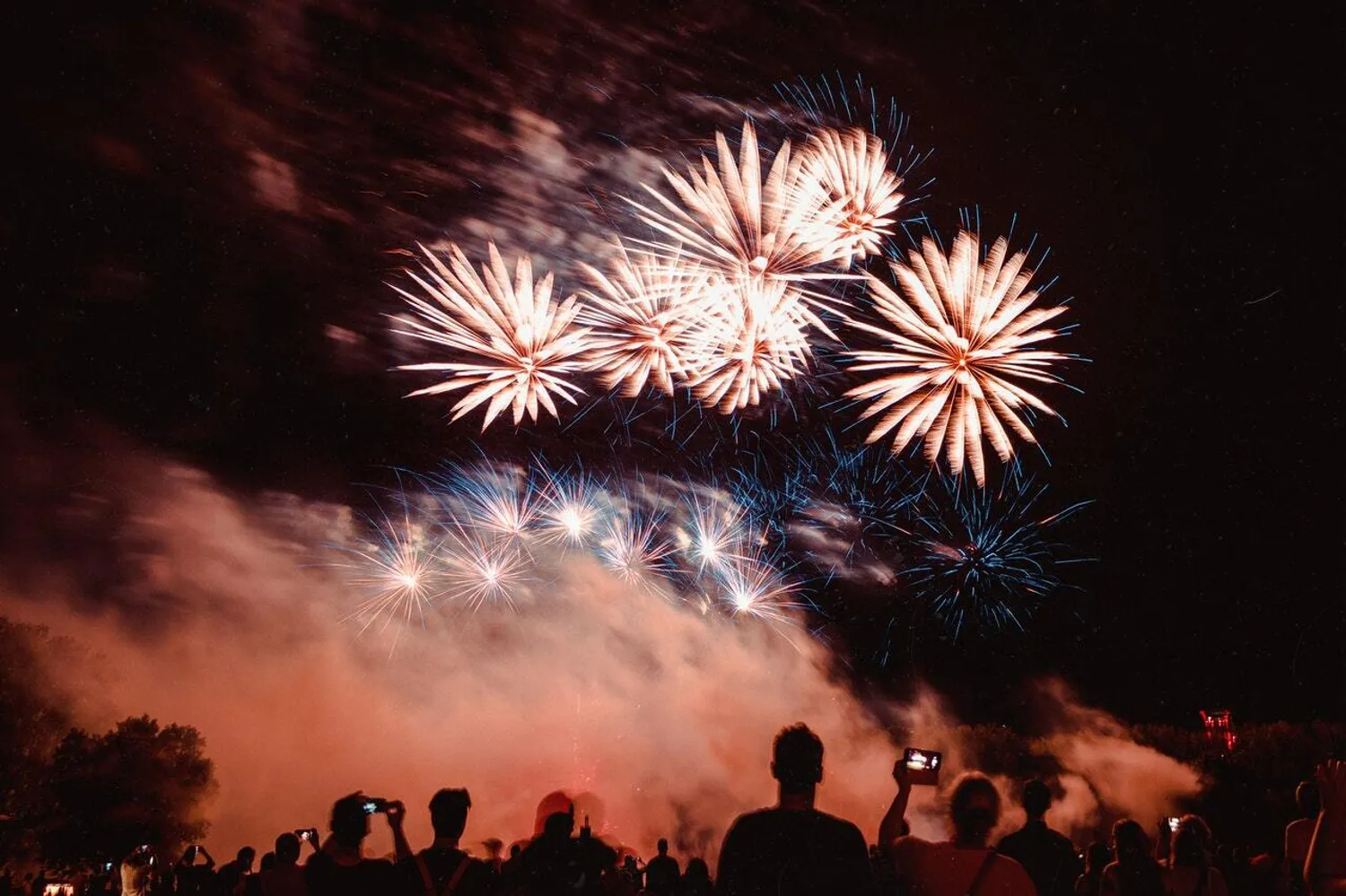
Not everyone is a photography enthusiast, or willing to cart heavy photography equipment around. If you simply want to know how to take photos of fireworks well using your phone, here are some tips.
Adjust your iPhone settings for long exposure and low ISO, or download an app that does it for you. Camera+ 2 is an app that offers slow shutter mode, which lets you shoot long photos of up to 30 seconds exposure; and action mode, allowing you to capture sharp photos of moving objects, and a burst feature to take multiple photos in quick succession.
Turn off your flash. Just like on a normal camera, you won’t need to use your flash at all for photos on your phone. Make sure the flash is turned off and not on automatic.
Take photos horizontally, framing your photos in landscape will almost always make for a better photo than in portrait.
Try using a selfie stick to get a better angle. Use a selfie stick directed outwards to get your lens above the crowds and achieve a better perspective.
Test out your settings by taking photos of a sparkler beforehand.
350 Barlow Moor Rd
Chorlton
Manchester, M21 8AZ
07810 222123
info@chorltonfireworks.com
